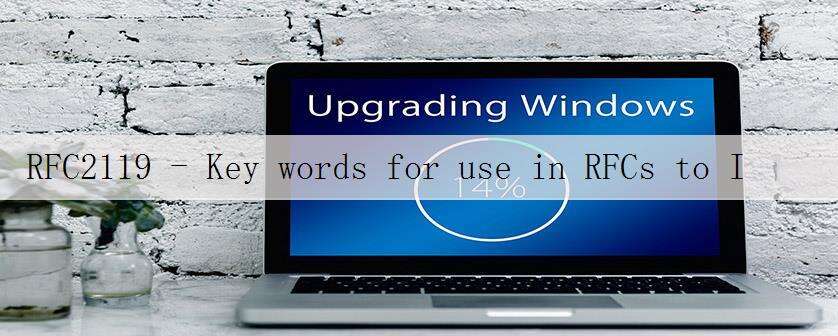RFC2119 – Key words for use in RFCs to Indicate Requirement Levels
办公教程导读
收集整理了【RFC2119 – Key words for use in RFCs to Indicate Requirement Levels】办公软件教程,小编现在分享给大家,供广大互联网技能从业者学习和参考。文章包含3909字,纯文字阅读大概需要6分钟。
办公教程内容图文

Network Working Group S. Bradner
Request for Comments: 2119 Harvard University
BCP: 14 March 1997
Category: Best Current Practice
Key Words for use in RFCs to Indicate Requirement Levels
Status of this Memo
This document specifies an Internet Best Current Practices for the
Internet Community, and requests discussion and suggestions for
improvements. Distribution of this memo is unlimited.
Abstract
In many standards track documents several words are used to signify
the requirements in the specification. These words are often
capitalized. This document defines these words as they should be
interpreted in IETF documents. Authors who follow these guidelines
should incorporate this phrase near the beginning of their document:
The key words "MUST", "MUST NOT", "REQUIRED", "SHALL", "SHALL
NOT", "SHOULD", "SHOULD NOT", "RECOMMENDED", "MAY", and
"OPTIONAL" in this document are to be interpreted as described in
RFC2119.
Note that the force of these words is modified by the requirement
level of the document in which they are used.
1. MUST This word, or the terms "REQUIRED" or "SHALL", mean that the
definition is an absolute requirement of the specification.
2. MUST NOT This phrase, or the phrase "SHALL NOT", mean that the
definition is an absolute prohibition of the specification.
3. SHOULD This word, or the adjective "RECOMMENDED", mean that there
may exist valid reasons in particular circumstances to ignore a
particular item, but the full implications must be understood and
carefully weighed before choosing a different course.
4. SHOULD NOT This phrase, or the phrase "NOT RECOMMENDED" mean that
there may exist valid reasons in particular circumstances when the
particular behavior is acceptable or even useful, but the full
implications should be understood and the case carefully weighed
before implementing any behavior described with this label.
5. MAY This word, or the adjective "OPTIONAL", mean that an item is
truly optional. One vendor may choose to include the item because a
particular marketplace requires it or because the vendor feels that
it enhances the prodUCt while another vendor may omit the same item.
An implementation which does not include a particular option MUST be
prepared to interoperate with another implementation which does
include the option, though perhaps with reduced functionality. In the
same vein an implementation which does include a particular option
MUST be prepared to interoperate with another implementation which
does not include the option (except, of course, for the feature the
option provides.)
6. Guidance in the use of these Imperatives
Imperatives of the type defined in this memo must be used with care
and sparingly. In particular, they MUST only be used where it is
actually required for interoperation or to limit behavior which has
potential for causing harm (e.g., limiting retransmisssions) For
example, they must not be used to try to impose a particular method
on implementors where the method is not required for
interoperability.
7. Security Considerations
These terms are frequently used to specify behavior with security
implications. The effects on security of not implementing a MUST or
SHOULD, or doing something the specification says MUST NOT or SHOULD
NOT be done may be very suBTle. Document authors should take the time
to elaborate the security implications of not following
recommendations or requirements as most implementors will not have
had the benefit of the eXPerience and discussion that produced the
specification.
8. Acknowledgments
The definitions of these terms are an amalgam of definitions taken
from a number of RFCs. In addition, suggestions have been
incorporated from a number of people including Robert Ullmann, Thomas
Narten, Neal McBurnett, and Robert Elz.
9. Author"s Address
Scott Bradner
Harvard University
1350 Mass. Ave.
Cambridge, MA 02138
phone – +1 617 495 3864
email – sob@harvard.edu
办公教程总结
以上是为您收集整理的【RFC2119 – Key words for use in RFCs to Indicate Requirement Levels】办公软件教程的全部内容,希望文章能够帮你了解办公软件教程RFC2119 – Key words for use in RFCs to Indicate Requirement Levels。
如果觉得办公软件教程内容还不错,欢迎将网站推荐给好友。
自学咖网 » RFC2119 – Key words for use in RFCs to Indicate Requirement Levels

